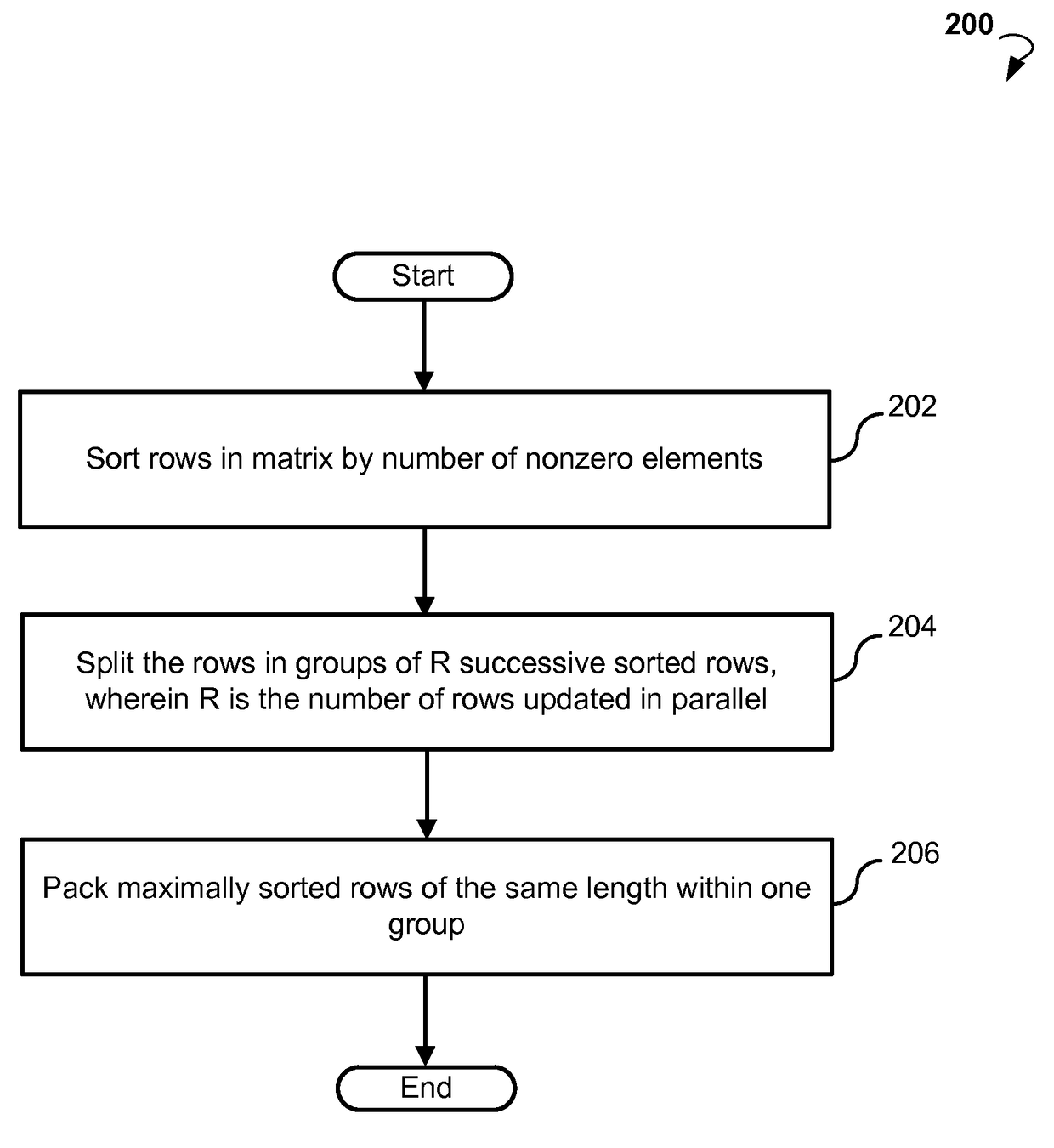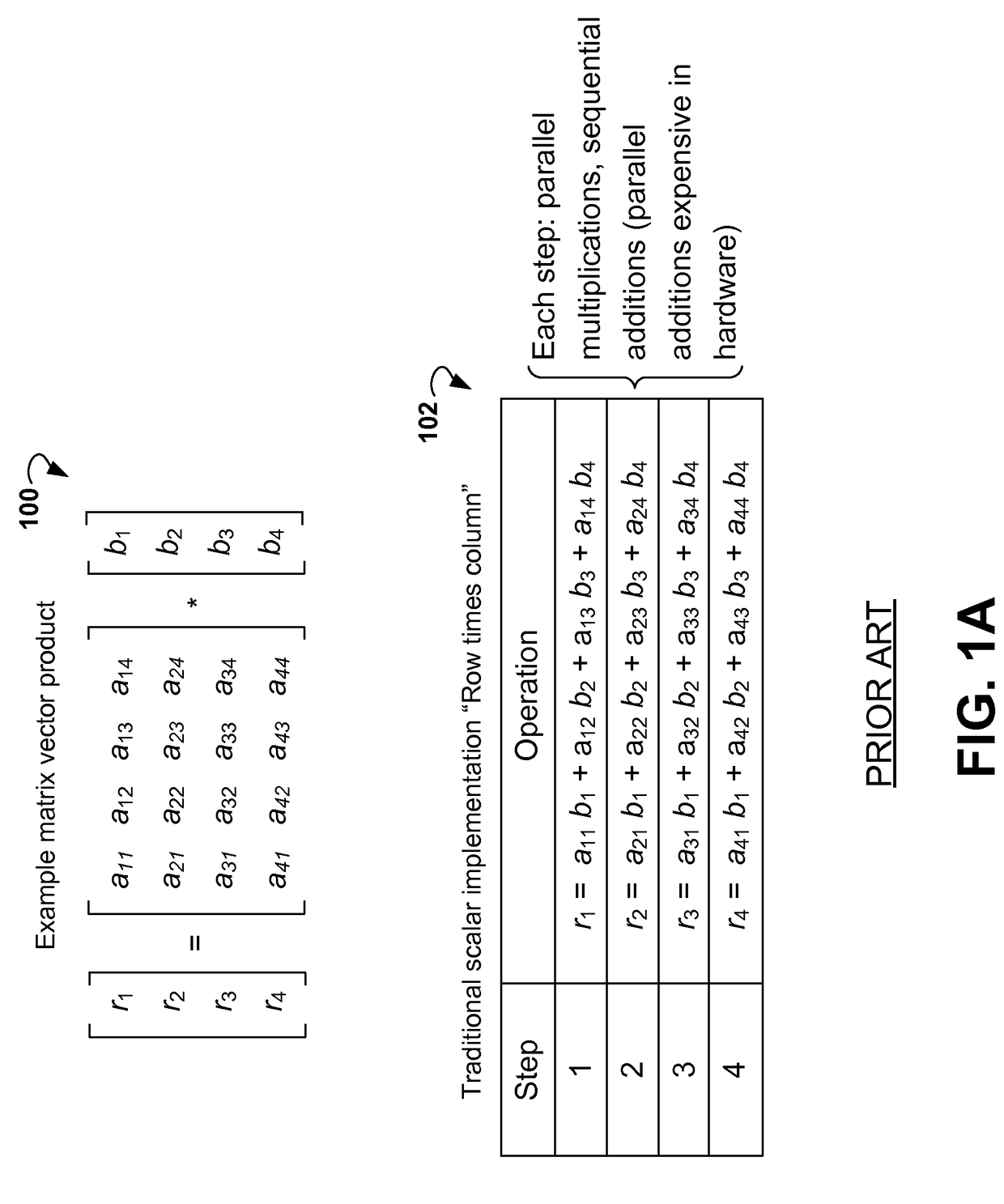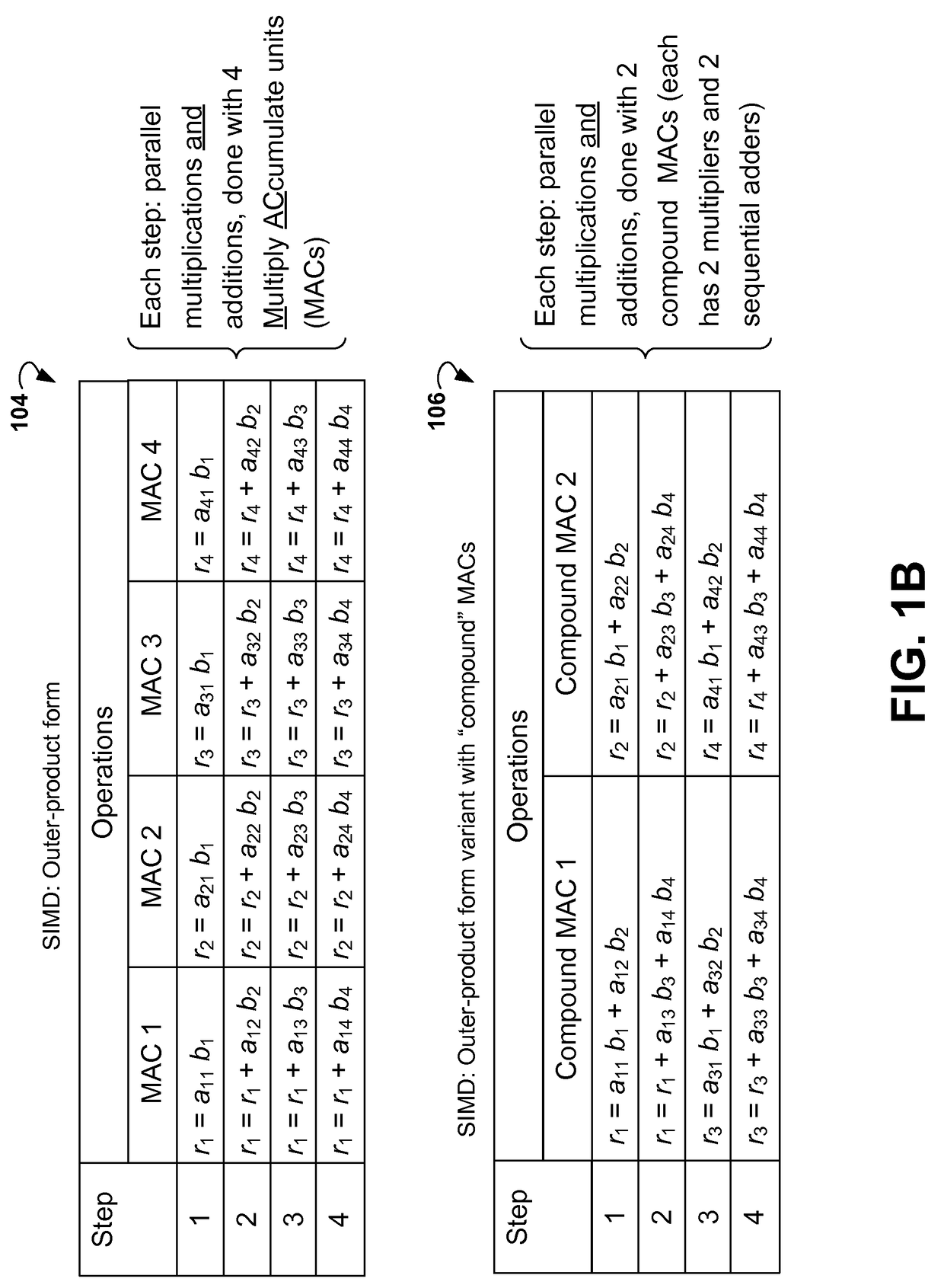Sparse matrix vector multiplication
a vector multiplication and matrix technology, applied in the field of data processing, can solve problems such as the traditional approach does not work well with simd architectures
- Summary
- Abstract
- Description
- Claims
- Application Information
AI Technical Summary
Benefits of technology
Problems solved by technology
Method used
Image
Examples
example 1
[0031]By way of example and not limitation, first assume that the matrix to be multiplied by a vector b has 8 rows (M=8) and 8 columns (N=8). The matrix elements are shown in Table 1. In the example matrix, the first digit of each nonzero element coincides with the row number while the second digit coincides with the column number (row and column numbers starting at one).
[0032]Then, assume that a number of computational units to process the matrix elements in the ALU is C=4 (such as the 4-way SIMD architectures shown in FIG. 1B). The method 200 applied to the example matrix in Table 1 results in the following memory layout (C=4, R=4) if architecture 104 (shown in FIG. 1B) is chosen:
wherein zero elements in rows 3 and 4 and columns 4 and 5 represent overhead. The overhead is required to make all rows within one group have the same length.
[0033]In some embodiments, generic memory access data is provided by Table 2, which is a memory layout or a representation of the matrix in Table ...
PUM
 Login to View More
Login to View More Abstract
Description
Claims
Application Information
 Login to View More
Login to View More - R&D
- Intellectual Property
- Life Sciences
- Materials
- Tech Scout
- Unparalleled Data Quality
- Higher Quality Content
- 60% Fewer Hallucinations
Browse by: Latest US Patents, China's latest patents, Technical Efficacy Thesaurus, Application Domain, Technology Topic, Popular Technical Reports.
© 2025 PatSnap. All rights reserved.Legal|Privacy policy|Modern Slavery Act Transparency Statement|Sitemap|About US| Contact US: help@patsnap.com



